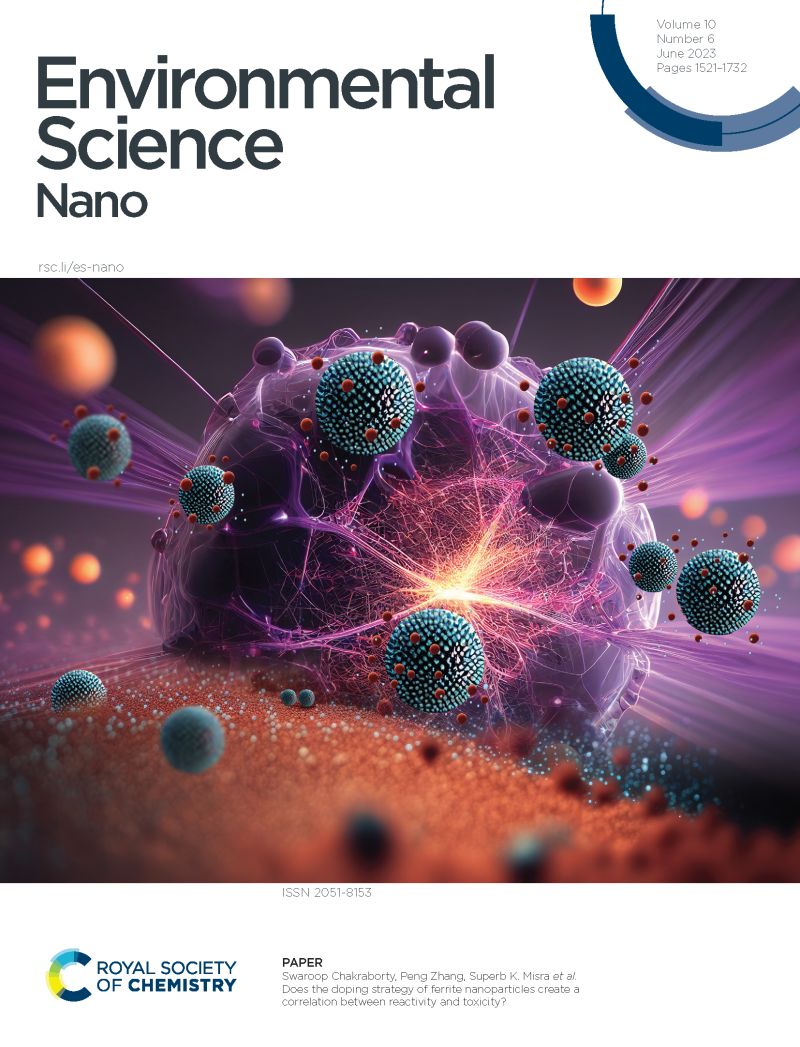纳米颗粒在水净化:多功能作用,挑战和可持续应用
IF 5.8
2区 环境科学与生态学
Q1 CHEMISTRY, MULTIDISCIPLINARY
引用次数: 0
摘要
先进的纳米颗粒能够去除传统方法无法有效处理的水中污染物,代表了水净化技术的新方向。本文综述了纳米颗粒的多种功能,包括吸附性能、光反应性和纳米膜组成特征、高表面积和反应性等。使用含铁、二氧化钛和金属氧化物的纳米颗粒可以显著提高水的净化效率,因为这些材料具有去除重金属和有机污染物的强大潜力。采用氧化石墨烯膜的过滤过程,病原菌和盐的去除率超过98%。利用纳米颗粒进行水处理面临三个主要缺点,包括制备方法昂贵、可扩展性有限、毒性不明确以及纳米颗粒的持久效应。这篇综述强调了可持续的纳米颗粒分析,警告说科学家必须仔细检查这些应用以防止环境危害。本文提出了纳米技术在水处理中的应用所面临的挑战,并对未来的研究提出了建议。本文章由计算机程序翻译,如有差异,请以英文原文为准。

Nanoparticles in water purification: multifunctional roles, challenges, and sustainable applications
Advanced nanoparticles represent a new direction in water purification technology because they remove water pollutants which traditional methods cannot handle effectively. This review examines the diverse functionality of nanoparticles that combines adsorption properties with photoreactivity and nanomembrane composition features, high surface area and reactivity, among other characteristics. The water purification efficiency can be significantly improved by using nanoparticles including iron, titanium dioxide, and metal oxides because these materials demonstrate strong potential for removing heavy metals and organic pollutants. The filtration process using graphene oxide membranes achieves pathogenic bacteria and salt removal exceeding 98%. Water treatment using nanoparticles faces three main disadvantages including expensive fabrication methods, limited scalability and unclear toxicity and lasting effects of nanoparticles. The review emphasizes sustainable nanoparticle analysis by warning that researchers must carefully examine these applications to prevent environmental harm. This paper presents the challenges related to nanotechnology applications in water treatment while providing recommendations for future research studies.
求助全文
通过发布文献求助,成功后即可免费获取论文全文。
去求助
来源期刊

Environmental Science: Nano
CHEMISTRY, MULTIDISCIPLINARY-ENVIRONMENTAL SCIENCES
CiteScore
12.20
自引率
5.50%
发文量
290
审稿时长
2.1 months
期刊介绍:
Environmental Science: Nano serves as a comprehensive and high-impact peer-reviewed source of information on the design and demonstration of engineered nanomaterials for environment-based applications. It also covers the interactions between engineered, natural, and incidental nanomaterials with biological and environmental systems. This scope includes, but is not limited to, the following topic areas:
Novel nanomaterial-based applications for water, air, soil, food, and energy sustainability
Nanomaterial interactions with biological systems and nanotoxicology
Environmental fate, reactivity, and transformations of nanoscale materials
Nanoscale processes in the environment
Sustainable nanotechnology including rational nanomaterial design, life cycle assessment, risk/benefit analysis
 求助内容:
求助内容: 应助结果提醒方式:
应助结果提醒方式:


